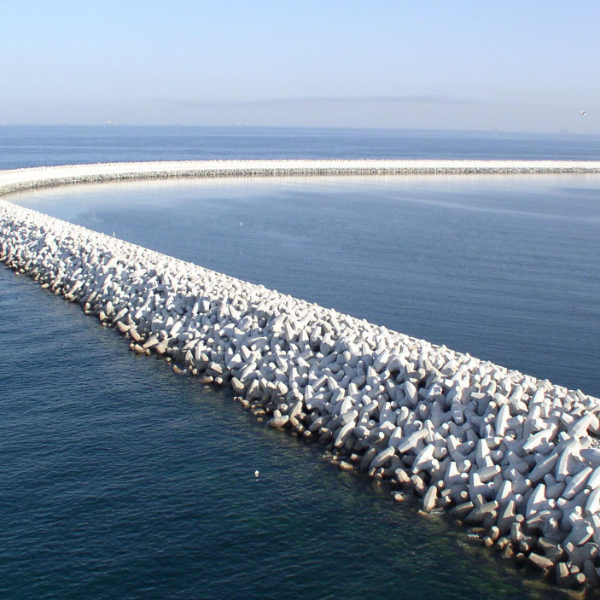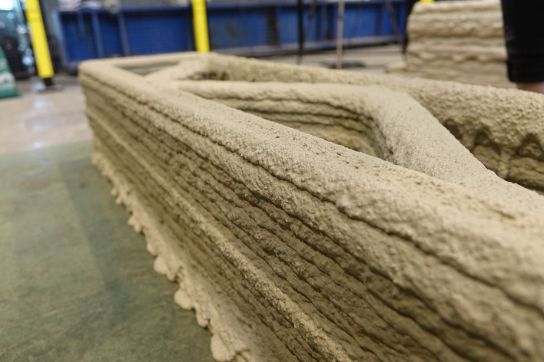Sustainable concrete mixtures for 3D printing breakwater units

Sustainable concrete mixtures for 3D printing breakwater units
In the swiftly evolving area of 3D concrete printing, a new research project is set up by Ghent University, construction company BESIX, start-up ResourceFull and engineering company Witteveen+Bos. The research will focus on developing sustainable concrete mixtures suitable for the printing of breakwater units. The combined expertise of the project partners will result in new, innovative and more sustainable solutions in hydraulic engineering.

As the major construction cost of a breakwater unit is related to the logistic resources needed to move the breakwater units from the yard to the construction site, the possibility to print it in situ, possibly even below the water level, would be very advantageous. Moreover, 3D printing would allow to define a tailor-made model breakwater unit, with more complex and optimized shapes in line with local wave patterns and sea currents. In addition, the layered surface, own to the 3D print technique, would allow for additional energy dissipation.
However, printing such massive units is a real challenge as the high binder contents currently used in printable mixtures would cause thermal cracking in addition to the drying shrinkage cracks which are related to this automated production technique. To guarantee the durability of the unit in a marine environment, the research partners want to develop a printable mixture which answers all requirements to print the contour or both the contour and the infill pattern of the breakwater unit.
The environmental impact of the mixture will also be taken into account. In case only the contour is printed, a sustainable filling material will be developed. Its sustainability in the marine environment will be further increased through improvement of the interlayer. Once these challenges are tackled, scale model breakwater units will be printed to investigate their durability and mechanical and hydraulic performance.
The Strategic Initiative Materials (SIM) Flanders and Flanders Innovation & Entrepreneurship (VLAIO) are funding this research project.
